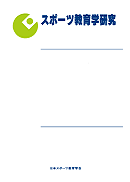Volume 39, Issue 1
Displaying 1-8 of 8 articles from this issue
- |<
- <
- 1
- >
- >|
-
2019 Volume 39 Issue 1 Pages 1-18
Published: May 31, 2019
Released on J-STAGE: September 02, 2019
Download PDF (1255K) -
2019 Volume 39 Issue 1 Pages 19-31
Published: May 31, 2019
Released on J-STAGE: September 02, 2019
Download PDF (568K) -
2019 Volume 39 Issue 1 Pages 33-50
Published: May 31, 2019
Released on J-STAGE: September 02, 2019
Download PDF (1422K)
-
2019 Volume 39 Issue 1 Pages 51-59
Published: May 31, 2019
Released on J-STAGE: September 02, 2019
Download PDF (316K) -
2019 Volume 39 Issue 1 Pages 61-78
Published: May 31, 2019
Released on J-STAGE: September 02, 2019
Download PDF (2749K)
-
2019 Volume 39 Issue 1 Pages 79-82
Published: May 31, 2019
Released on J-STAGE: September 02, 2019
Download PDF (279K) -
2019 Volume 39 Issue 1 Pages 83-86
Published: May 31, 2019
Released on J-STAGE: September 02, 2019
Download PDF (482K) -
2019 Volume 39 Issue 1 Pages 87-89
Published: May 31, 2019
Released on J-STAGE: September 02, 2019
Download PDF (1030K)
- |<
- <
- 1
- >
- >|
